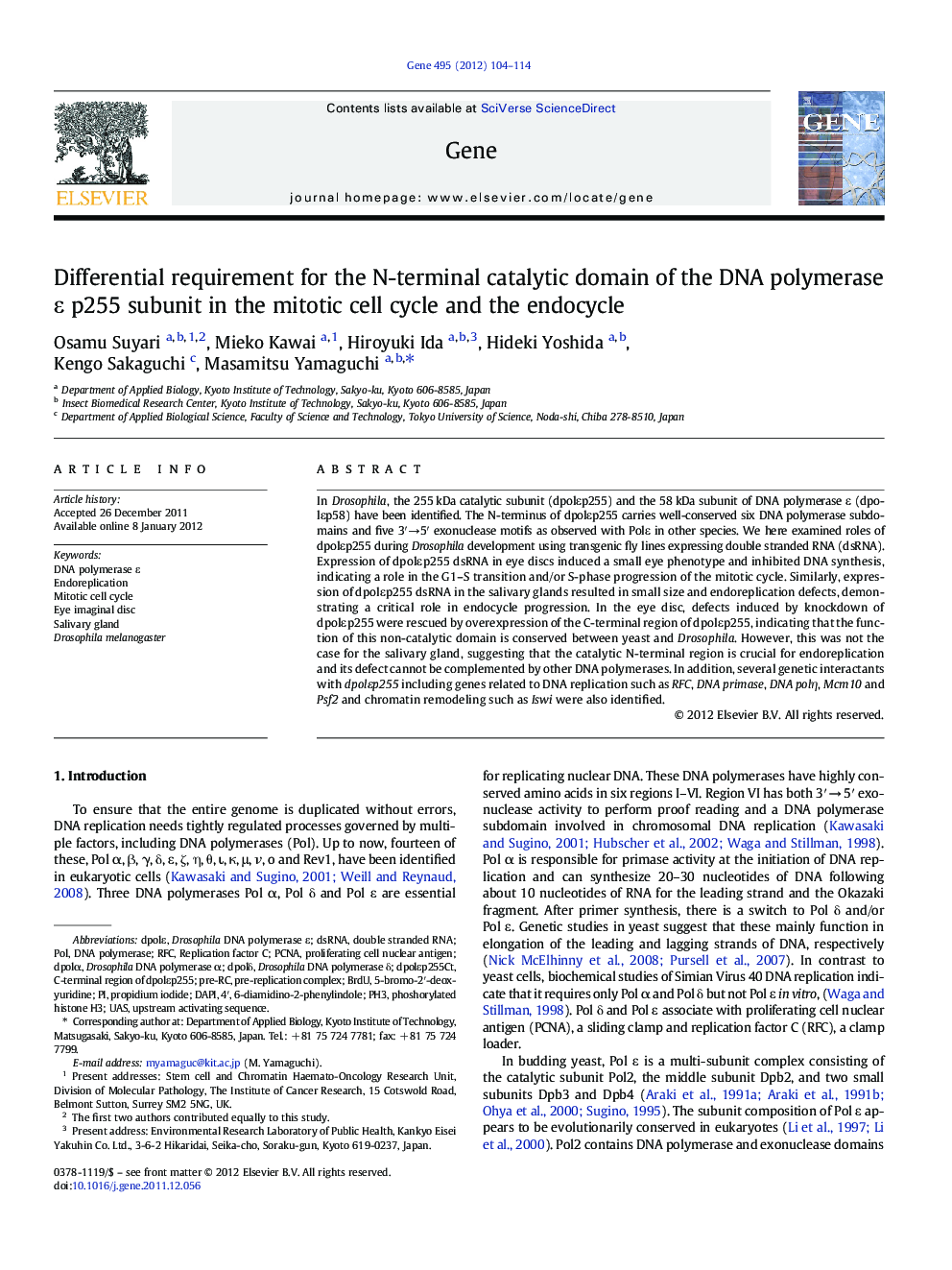| Article ID | Journal | Published Year | Pages | File Type |
|---|---|---|---|---|
| 2818094 | Gene | 2012 | 11 Pages |
In Drosophila, the 255 kDa catalytic subunit (dpolεp255) and the 58 kDa subunit of DNA polymerase ε (dpolεp58) have been identified. The N-terminus of dpolεp255 carries well-conserved six DNA polymerase subdomains and five 3′→5′ exonuclease motifs as observed with Polε in other species. We here examined roles of dpolεp255 during Drosophila development using transgenic fly lines expressing double stranded RNA (dsRNA). Expression of dpolεp255 dsRNA in eye discs induced a small eye phenotype and inhibited DNA synthesis, indicating a role in the G1–S transition and/or S-phase progression of the mitotic cycle. Similarly, expression of dpolεp255 dsRNA in the salivary glands resulted in small size and endoreplication defects, demonstrating a critical role in endocycle progression. In the eye disc, defects induced by knockdown of dpolεp255 were rescued by overexpression of the C-terminal region of dpolεp255, indicating that the function of this non-catalytic domain is conserved between yeast and Drosophila. However, this was not the case for the salivary gland, suggesting that the catalytic N-terminal region is crucial for endoreplication and its defect cannot be complemented by other DNA polymerases. In addition, several genetic interactants with dpolεp255 including genes related to DNA replication such as RFC, DNA primase, DNA polη, Mcm10 and Psf2 and chromatin remodeling such as Iswi were also identified.
► Drosophila Polε plays an essential role in the G1–S transition and/or S-phase progression of the mitotic cycle. ► Drosophila Polε plays an essential role in endocycle progression. ► In mitotic cell cycle, the catalytic N-terminal region of dpolεp255 is dispensable. ► In endocyle, the catalytic N-terminal region of dpolεp255 is crucial.
